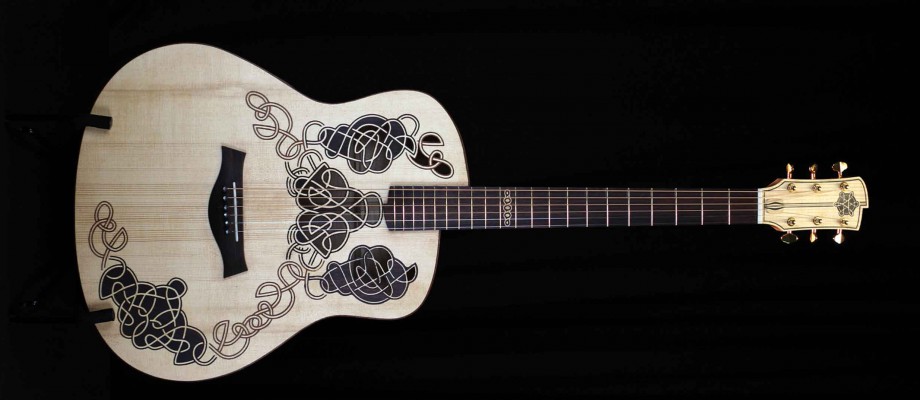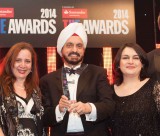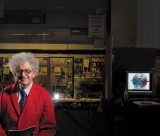
Carolan, the talking guitar
March 2nd, 2015
Bob Dylan’s Fender Stratocaster, Willie Nelson’s ‘Trigger’ and Neil Young’s ‘Old Black’ Gibson Les Paul: if guitars could talk … imagine the tales they could tell.
Scientists at Nottingham have teamed up with a master craftsman to create a beautiful interactive acoustic guitar that can digitally capture and chart its own life history.
The project uses unique technology to hide digital codes – like QR codes – within the decorative patterns adorning the instrument. These can be scanned using an app on a mobile phone or tablet to unlock or upload information via the internet. And so the guitar and its players can build and share a digital footprint of its lifetime.
The finished instrument is dubbed Carolan after the composer Turlough O’Carolan, the last of the great blind Irish harpers and an itinerant musician who roamed Ireland at the turn of the 18th Century. Professor Steve Benford, a computer scientist in the University’s Mixed Reality Laboratory and keen amateur guitarist, is leading the project. He said: “Like its namesake, Carolan is a roving bard; a performer that passes from place to place, learning tunes, songs and stories as it goes and sharing them with the people it encounters along the way.
“Making this interactive guitar has been an incredibly difficult challenge, involving an unusual meeting of minds between a traditional craftsman and computer scientists.
“This is just the beginning of the journey. We’re going to learn so much when our guitar finds its way into the world to gather stories and songs from players and audiences.”
The computer scientists teamed up with Liz Jeal, a freelance graphic designer and teacher, who created the Celtic-inspired patterns. Using a new technology called Aestheticodes, the scientists embedded the codes within the designs.
Next, Nick Perez, a luthier (guitar maker) and teacher at the Newark School of Instruments and Crafts, built the guitar. The design features a striking soundboard which mixes decorative Celtic knotwork with multiple soundholes to create a scannable pattern.
The Aestheticode designs were etched on to the flamed maple of the body, then carefully inlaid by Nick with Indian Rosewood – the result is a crisp, clean design that can be scanned from some distance away, perhaps through a shop window or even at a concert.
The decorative patterns each reveal an aspect of the guitar’s life story. The headstock of the guitar, which traditionally features the maker’s logo, links to a digital version of the maker’s label while the soundboard tells how it was made and where it has visited.
The soundboard plays back tunes that have been recorded on the guitar and will allow players to upload their own recordings.
The back of the guitar is reserved for its unofficial history – a public blog on which people can comment or post photos, videos and recordings wherever they encounter it.
Finally, a small pattern discreetly located unlocks hidden content for the truly dedicated fan clever enough to find it.
The project is funded by the Engineering and Physical Sciences Research Council (EPSRC) through Professor Benford’s Dream Fellowship award, the Horizon Centre for Doctoral Training and the Fusing Semantic and Audio Technologies (FAST) project.
The full story of the Carolan has been documented via a blog, which also features videos of the etchings being made on the body of the instrument.
Visit carolanguitar.com for videos and more on the project.
Tags: Aestheticodes, Carolan, Dream Fellowship, Engineering and Physical Sciences Research Council, EPSRC, Horizon Centre for Doctoral Training and the Fusing Semantic and Audio Technologies (FAST), Liz Jeal, Newark School of Instruments and Crafts, Nick Perez, Professor Steve Benford
Leave a Reply
Other Issue 81

Cornea team researchers of the year
Nottingham picked up Research Project of the Year at the Times Higher Education Awards 2014. Scientists […]

Professor Martyn Poliakoff knighted
Professor Martyn Poliakoff was knighted in the Queen’s New Year Honours 2015. Professor Poliakoff received the […]

